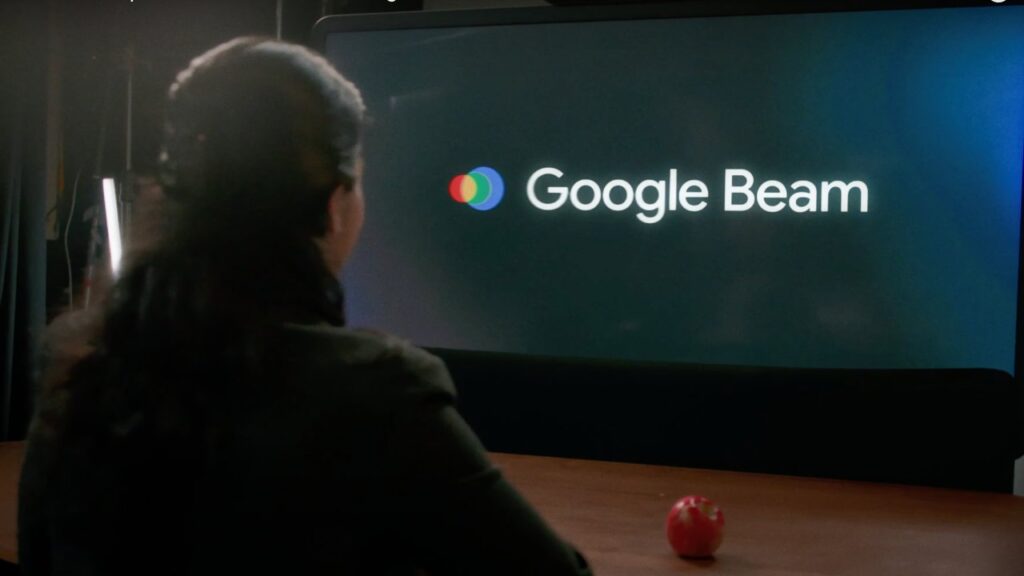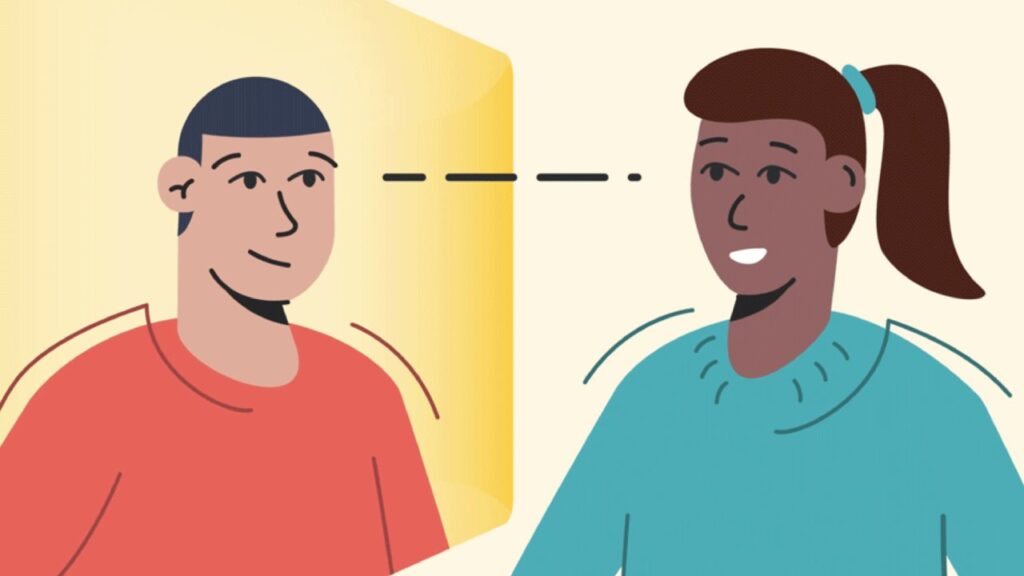The 2025 Google I/O event was packed with cool announcements. But one thing that truly stood out? Google Beam. It’s not just another app or AI tool — this device can entirely change how we communicate to people remotely.
If you’re still confused about what it is, how it works, and whether it’s a device or a service — you’re in the right place.
In this article, we’ll break down:
- What is Google Beam?
- How Google Beam AI works
- Key features and use cases
- Is it a device or a platform?
- Availability and cost
- And finally, some quick FAQs
Let’s dive into it.
What is Google Beam?

Google Beam is Google’s new AI-powered 3D video communication platform. Think of it as the next step in video calling — but way more real and lifelike.
It’s actually built from an earlier project called Project Starline, where Google tried to make remote conversations feel like in-person ones. Now, with Beam, they’ve turned that idea into something real — not just for labs, but for actual use.
When you’re on a Beam call, the person you’re speaking to appears in life-size 3D. Like they’re sitting right across from you. You don’t need a headset or goggles. Just look at the screen, and you’ll feel like you’re sharing the same space.
So if regular video calls feel flat or distant, Beam aims to make remote chats human again — with proper eye contact, body language, and presence.
How Google Beam AI Works (Simple Breakdown)

Okay, let’s break this down in the simplest way.
Every Beam device has a bunch of cameras (six in total) that record you from different angles. These camera feeds are then processed by a powerful AI model that builds a 3D version of you, in real-time.
This 3D model is shown on a special screen (called a light field display), which makes it look like the other person is sitting right in front of you — not on a screen, but in your space.
Here’s the fun part: the AI tracks your head movements at 60 frames per second. So if you move a little left or right, the image adjusts instantly, keeping the 3D illusion real.
This means:
- You see the other person in 3D.
- You can make real eye contact.
- You pick up on small expressions, gestures, nods — all the natural stuff missing in Zoom calls.
It’s like FaceTime meets holograms — powered by serious AI.
Google Beam AI: The Secret Behind the Magic

Google calls this an AI-first platform, and here’s why that matters.
1. AI builds your 3D image in real time:
Beam uses AI to stitch together all the camera angles and make a 3D version of you. It doesn’t just show a video feed — it shows you in true depth, like you’re really there.
2. AI handles realistic rendering:
As you move, the AI updates how the 3D image looks based on your position. That’s why it feels so immersive.
3. AI enables real-time translation:
This is wild — during Beam calls, you can talk in English, and the person on the other end hears it in Spanish. The Beam AI translates your speech, keeps your voice tone, and even syncs your lip movement and expressions.
So yes, you’re talking across languages, but it still feels like a natural chat. Google showed this feature live at I/O 2025.
4. AI supports eye contact tracking:
Making eye contact on Zoom? Awkward. But Beam AI tracks exactly where your eyes are and adjusts the 3D image to match. So if someone looks at you, it really looks like they’re looking right into your eyes.
That’s not just cool — it’s game-changing for interviews, therapy, or any serious conversations.
Real-World Uses: Why Beam Actually Matters

Let’s talk about where this can be useful. Google Beam isn’t just a tech demo — it has real applications.
1. Business Meetings
Big companies like Deloitte and Salesforce are already testing Beam. Imagine remote team meetings where you actually feel present. Eye contact, gestures, natural conversation — all from different cities.
2. Cross-Language Conversations
Thanks to Beam AI’s live translation, language barriers can disappear. You speak in your language, they hear it in theirs. Smooth, real-time, no human interpreter needed.
3. Healthcare (Telemedicine)
A healthcare organisation called Hackensack Meridian is trying it out. Doctors can consult patients remotely but still feel like they’re in the same room. Super useful for trust, reading patient emotions, or doing therapy.
4. Education and Training
Duolingo is exploring Beam too. Language practice sessions or even full lessons could feel like sitting in a real classroom with your tutor, even if they’re 2,000 miles away.
5. Hiring & Interviews
A company called Recruit plans to use Beam for virtual interviews. It could make the hiring process feel much more personal and human.
Bottom line — anyone who values natural, face-to-face interaction will benefit from Beam. It’s not just about seeing someone. It’s about feeling present with them.
Is Google Beam a Device or an App?

Great question — and one many people are asking.
Google Beam is a device.
You won’t find it as an app to download on your phone or laptop. It’s real hardware, built in partnership with HP. Think of it like a futuristic video booth or console — with a big screen, cameras, sensors, and some serious tech inside.
That’s what makes it work:
- It needs special cameras to capture you from all sides.
- It needs a special screen to show you in 3D.
- It connects to the cloud to do all the AI processing.
It’s not a regular webcam. It’s a full setup, meant for offices, meeting rooms, and high-value conversations.
Also, Beam is designed to work with tools like Zoom and Google Meet. So you don’t need to ditch your existing setup — it’ll fit right in.
In short:
- It’s not an app.
- It’s not a consumer gadget.
- It’s a hardware + cloud platform for enterprises.
What About Cost and Release?

Right now, Google Beam is not something you can just go out and buy.
Here’s what we know:
- Google will show the Beam device publicly at InfoComm 2025 (a tech conference happening between June 7-13).
- Then, they’ll roll it out to select companies later in 2025.
- Early partners include big names like Salesforce, Duolingo, Citadel, and more.
As for the price — Google hasn’t shared anything yet. But since it involves custom hardware, expect it to be expensive and enterprise-focused.
So, regular folks won’t get this at home anytime soon. But if it works well in business settings, maybe it’ll expand later.
FAQs: Quick Answers About Google Beam
1. Is Google Beam an app I can download?
No. Beam is a hardware-based platform, not a phone or computer app.
2. Do I need to wear glasses or VR headsets to use Beam?
Nope. Beam works without any headsets. You just sit in front of the device.
3. Will it work with Zoom or Google Meet?
Yes. Google said Beam will integrate with popular video platforms like Zoom and Meet.
4. Can I buy Google Beam device for home use?
Not yet. Right now, it’s for businesses. Google hasn’t announced anything for personal use.
5. Does Beam support language translation?
Yes! It can translate speech in real time — with the same voice and even synced expressions.
Final Thoughts
Google Beam is the kind of tech we’ve seen in sci-fi movies — and now, it’s becoming real. With life-size 3D visuals, real-time AI, live translations, and no weird glasses — Google Beam is aiming to change how we communicate forever.
If it lives up to its promise, this could be the future of remote work, interviews, healthcare, education, and so much more. For now, it’s starting with big companies. But who knows? In a few years, maybe we’ll all have a Beam at home.

